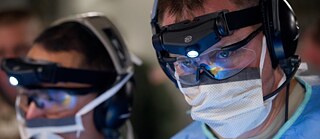The Coronavirus, or more accurately, Covid-19, is sweeping across China and causing global alarm. The World Health Organization (WHO) declared a global health emergency on the 30th January 2020. What do scientists know about the virus so far? What have the public health experts told us? And, first of all, why is the world so nervous about the coronavirus?
A new disease
It is not necessarily because this virus is more deadly than other known viruses like Ebola, but because the current plague is not an epidemic, but a pandemic. The former is a sudden increase in the number of cases of a disease - more than what's typically expected for the population in that area. The latter, according to the WHO, is “the worldwide spread of a new disease.”“New disease” and “worldwide spread” are the two characteristics of the current crisis brought by coronavirus. An unknown and highly contagious virus means unpredictable public health risks: both for its damage on individual patients and its spread.
Highly infectious
Health organizations use a number to gauge whether the outbreak will spread - R0, pronounced R-nought. R0 is the average number of people who will catch the disease from a single infected person, in a population that’s never seen the disease before. If R0 is 3, then on average every case will create three new cases. The coronavirus had an estimated R0 of 4 in the beginning, which later reduced to 2.68, so it is still a highly infectious disease. The deadly virus Ebola has an R0 of 2.At this stage, the data collected about the disease are still constantly changing. But current recorded cases show that the mortality rate is 11%, higher than the 10% of SARS virus, but lower than the 40% of the MERS virus. 23% of the patients were sent into an intensive care unit (ICU). The ICU data is also important, because the survivor might suffer from irreversible damage to the lungs.
Who is at risk?
At the beginning of the crisis, it seems that the severity of the symptoms on the patients was not particularly related to their medical history or health status. Half of the early patients were between the age of 25-49, but the infected patients ranged from an 8 months old baby to people above 80. However, the World Health Organisation has since updated this assessment.While we still need to learn more about how Covid-19 affects people, thus far, older people, and people with pre-existing medical conditions (such as diabetes and heart disease) appear to be more at risk of developing severe disease.
World Health Organisation (WHO), 11.02.2020
Finding solutions collaboratively
Like all pandemics in human history, the coronavirus is not the biggest challenge. The biggest challenge is whether the humans can unite instead of surrendering to ignorance, arrogance, panic, chaos, suspicion and hatred towards each other in time of crisis. If we manage to handle ourselves well, we will handle the coronavirus well. Maybe start by washing our hands and disinfecting our mobiles every day, and help out those in need, both near and far.
“Frankly …”
On an alternating basis each week, our “Frankly …” column series is written by Liwen Qin, Maximilian Buddenbohm, Dominic Otiang’a and Gerasimos Bekas. In “Frankly … posthuman”, Liwen Qin takes a look at technical advances and how they affect our lives and our society: in the car, in the office, and at the supermarket checkout.
February 2020
